To play the piano using just chords
1) Pick a key signature and a major scale
2) Choose the I-ii-iii-IV-V-vi-vii chords from that scale
3) Understand that chords consist of every other note from the scale, ie, C-E-G
4) Find each chord on the piano and play them together until you’re comfortable.
This is kind of like the bare minimum approach to learning how to play the piano using just chords. There is a lot more to talk about when it comes to triads, extended and altered chords, as well as how one should think about approaching the keys and basic music theory.
Guide To Playing the Piano With Only Chords
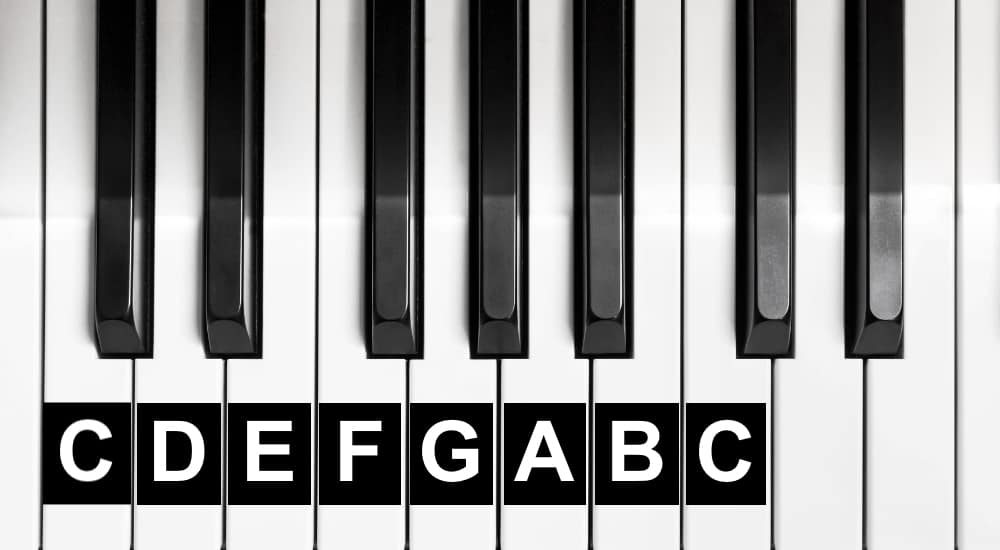
I would argue that the first step to learning how to play the piano while using just chords is to know what major and minor triads are and then have the ability to map them out on the keyboard.
The C Major scale, particularly the Major scale, is the basis on which the rest of Western music theory is based. For that reason, a lot of teachers will start out teaching the C Major scale right away in addition to some of its major chords.
For instance, a more traditional piano teacher will probably start with the I, the IV, and the V chord which are C Major, F Major, and G Major.
These are called the 1, 4, and 5 chords, as the roman numerals indicate, and together they represent probably what is the most commonly used chord progression of all time. It’s one of the many progressions that I listed in my songwriting tips article.
That said, there are different ways to approach teaching the piano. Robin Butler’s PianoForAll, for instance, does a great job of getting the piano player accustomed to the instrument right away by teaching the notes of the keyboard, which is the part we’re about to get to next.
1) Know the Keys of the Piano
I’ve made this point many times before, but it’s worth mentioning again that the keys of the piano all repeat themselves up and down the piano in a way that’s very memorable and intuitive. For instance, the accidentals like sharps and flats are represented by the black keys and then the white keys represent then natural notes.
In this way, you can actually jam in the Key of C Major up and down on the piano without thinking about it because regardless of what white key you use, you’ll still be in the key of C Major. Additionally, if you build chords by pressing notes together, you’ll get chords that belong in that scale as well.
That said, it does take some work to memorize the notes of the piano because there are still 12 of them within each octave. For me, personally, I still use the white notes as a frame of reference for determining what the black keys are.
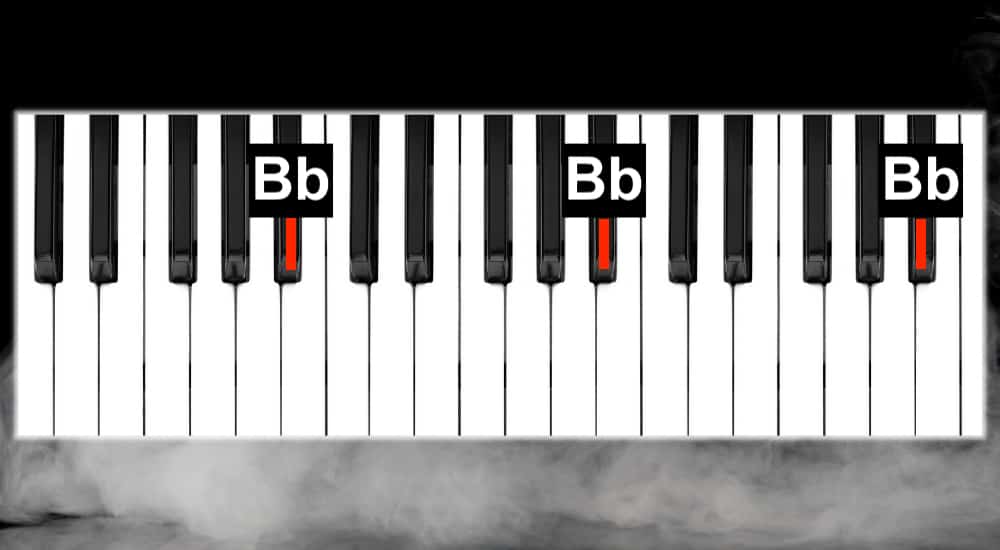
For example, If I’m looking for B-flat, I first look for the B-note, and then I go one half-step down from there to know that I have B-flat. The reason for that is that I’m a guitar player and not a piano player by trade, so my understanding of the keyboard isn’t as thorough.
Moving on though, so how would go about learning the notes of the piano? What I would do is I would print off a sheet or a picture of one octave on the keyboard and hang it somewhere where you can see it.
From there, I would approach it the same way that I approach learning the notes of the fretboard which is to make triads and chords.
2) Choose A Key Signature
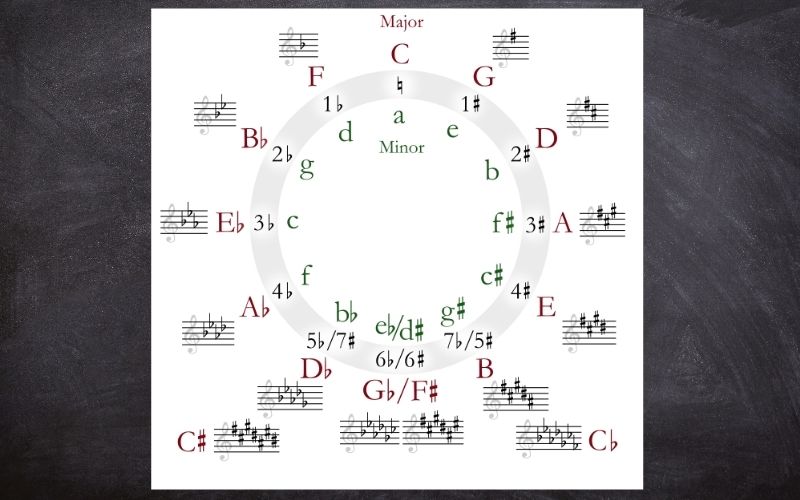
According to Hook Theory, C Major and its relative minor, A Minor, are the most commonly used key signatures in music. The reason, as I said before, is because all of the notes on the keyboard are in the key of C Major if you don’t press any of the black keys. Additionally, I imagine it’s because this is an easier key to sing in.
What key signature you choose to work with is up to you, but I would say that C Major or A Minor is a good choice because, as I said, they’re very easy to work with because they don’t have accidentals. Going forward, let’s actually choose A Minor, and then I’ll show you the chords of A Minor as well as how to play them.
3) Pick A Scale
Because we chose the key of A Minor, we’ll choose the A Minor Scale, which is just the notes of C Major but starting on the sixth degree. Let’s dive into that right now:
C Major: C, D, E, F, G, A, B, and C
A Minor – starts on the 6th note: A, B, C, D, E, F, G, and A
It’s worth pointing out that this principle applies to all of the key signatures as well. This means that if you have a Major Key, you just start on the 6th note of that Major Scale and you’ll have the relative minor, which is the same notes but with a different tonal center. I talked more about tonal centers in my article on the modes.
If you wanted to switch from the relative minor to the relative major, however, you would go up by three notes. For example, if you want to switch from the A Minor to C Major, you count from 1 starting at A and up to 3 which will give you C Major.
This also works with every relative minor. For instance, if you’re in the key of D Minor, count by three with D as 1 and you get D, E, and F. F Major is the relative major of D Minor.
4) Build Chords From Modes and Scales
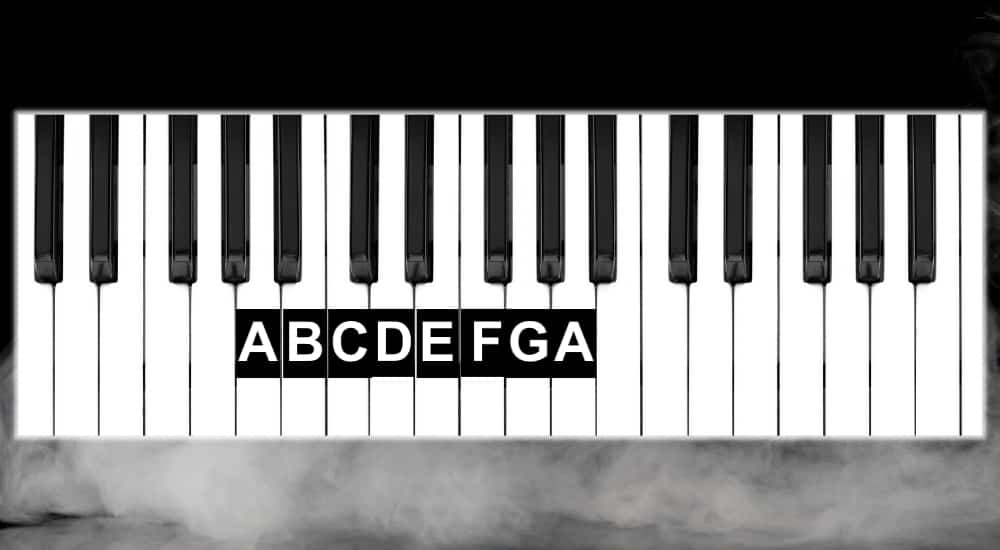
So now that you’ve got an idea of the basics including the major and minor scale, how to get from relative major to relative minor and vice versa, let’s get into building triads from the A Minor Scale. Like I said earlier, the A Minor Scale is the following notes:
A Minor Scale: A, B, C, D, E, F, G, A
To build triads, you take three notes – every other note starting from the root – from each part of the scale. That’s going to look like this:
ACE, BDF, CEG, DFA, EGB, FAC, GBD, ACE
Those are the notes of all the chords of A Minor. Each one has its own tonality and sound which we’ll talk about now.
5) Understand Minor, Major, Diminished, Augmented, and Dominant 7th Chords
The Major, Minor, Harmonic Minor, and Melodic Minor scales – which are the primary scales in Western music theory – have scale degrees where building triads from each note of the scale gives you a certain chord. We won’t talk about the other ones, so let’s stick to the major and minor scales and their chords to keep it simple.
Major: I, ii, iii, IV, V, vi, vii
(I-IV-V are major)
Minor: i, ii, III, iv, v, VI, VII
(III-VI-VII are major)
Remember we’re talking about A Minor, so let’s build the triads that I talked about earlier from the A Minor scale, ie, ACE, BDF, etc.
A Minor Scale
| A Minor Scale Degree | Notes | Chord |
|---|---|---|
| i | ACE | A Minor |
| ii | BDF | B Diminished |
| III | CEG | C Major |
| iv | DFA | D Minor |
| v | EGB | E Minor |
| VI | FAC | F Major |
| VII | GBD | G Major |
6) Use Google to Find Chord Diagrams (Although, It’s Best to Figure It Out By Yourself)
For the sake of being as fast as possible, I said that you could find the chords by just googling each one, but the fact of the matter is that you’ll learn how to play the chords, and more importantly, you’ll understand better how they’re made if you figure out how to play each of the chords I listed above on your own without googling them.
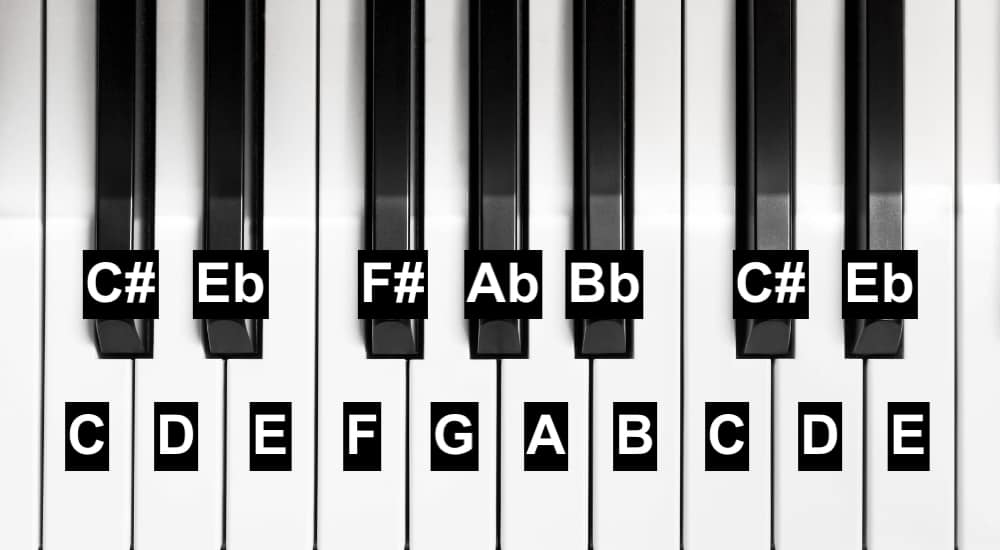
If you’ll recall the 1-octave diagram that I used for the piano and all of its notes, you now have at your disposal the means to play all of the 7 chords of the A Minor Scale. Remember, you want to think in triads. This is a very important principle.
In essence, to play each chord of the A Minor Scale, you just have to play three notes at a time – every other note – using each note as the root until you finish the scale. Here’s a video of me doing that right now, so you know what I’m talking about.
Go ahead and play these very same chords on your piano or keyboard.
7) Use Both Hands to Play One Chord to Build Hand Synchronization
Once you’ve figured out how to play these basic triads on the piano, which you probably did with one hand if you’re anything like me, you then went to figure out how to play the same chords but by using both hands, rather than only one. To do this, it’s really the same thing – and this is where the structure of the piano is really helpful.
Remember that the notes are the same – octave by octave – up and down the piano, so if you’ve played an A Minor triad with your left hand, you can simply use your right hand to add other notes of that same triad further up the piano but using your right hand.

This is how you get really nice-sounding chords on the piano. Because we have ten fingers, it’s possible to have a 10-note A Minor Chord that sounds very harmonically rich and interesting, unlike the guitar, where we can only play 6-note chords maximum (because there are only 6 strings). Let’s dive into this concept a little further.
How to Play Piano Chords With Both Hands?
To play piano chords with both hands, first, find the notes of the chord that you want to play, ie, the A Minor chord, which has 3 notes, A, C, and E. Play the first three notes with your left hand and then find those exact same notes one octave higher and then play them with your right hand.
This is undoubtedly the easiest way to go about playing a piano chord with both hands, but you can get a lot more sophisticated once you start reordering the notes or using what’s called inversions, which is when you play the notes of the chord in a different order, specifically, with the root note change to another note of the chord.
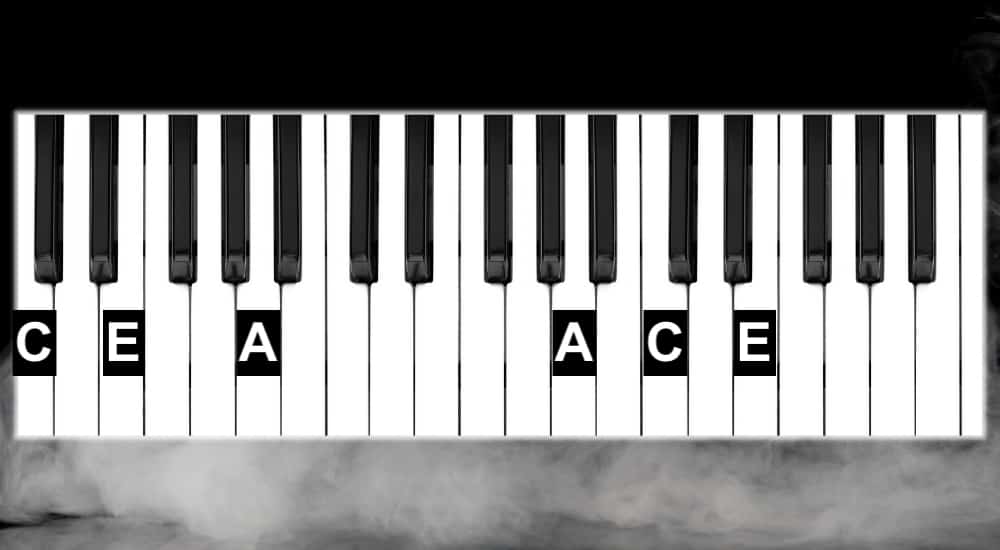
In some cases, inversions can become a whole other chord altogether especially if you’ve shifted the tonal center of the chord, but if you keep the tonal center the same but re-order the rest of the notes around that tonal center, you’ll get the same chord with the same tonal center but with a totally different flavor and feel.
8) Study the Piano with Guided Programs like PianoForAll to Improve

The next best step is to get a guided program like PianoForAll (on my Product Page). I found this piano program particularly helpful for the way that it approaches the instrument because it’s not bogged down by theory. As I explained in my article on the topic, it’s more focused on getting you playing right away.
Can You Play Piano With Just Chords?
It’s very possible to play the piano with just chords because chords, particularly, triads are like the building blocks of music and the major scale is like the foundation on which everything else is based and compared to. You can use them for chord progressions or play them as single notes.
I think using triads is one of the best things to do on any instrument because you can learn a number of different things from them. One is that you can learn where the notes are on your instrument. The second is that it’s easier to remember the notes when you use them as triads or arpeggios.
You can also learn the hand-eye coordination that’s needed to play the piano in addition to the left and right-hand synchronicity. Once you’ve learned to play triads, you can take it a step further and play them one note at a time as arpeggios, which can give the appearance of playing the piano other than in chords.
But really, if you think about it, even if you’re playing the notes melodically – one note at a time – rather than harmonically – more than one note at a time – you’re always playing notes that can be made into a chord.
Whenever I jam along to progression or a backing track, I usually start out with knowing the chords first, and then I make quick arpeggios with them.
Arpeggios are just when you play the notes of the chord one after the other, and they are a great way to come up with something to play over a progression quickly and simply. Arpeggios are probably my favorite thing to play around with.
Is There An Easy Way to Learn Piano Chords?
The easiest way to learn piano chords is to first understand basic music theory like what’s taught on the Music Theory website. Rather than googling the chords you want to learn, you’ll quickly understand what a chord is, how they work, and their relationship to music as a whole. (Music Theory Website here).
There is often a more efficient way of doing things, and I think that learning chords that way is the best way to go, although, getting bogged down by theory is something that you should avoid if you feel that it’s killing your passion for the instrument.
I find it’s best to first cultivate your passion and love for the instrument through whatever means you find the most inspiring, and once it’s set in stone that you’re serious about playing, then you can get more into theory. But when you’re first starting out, I find it’s best to learn the most basic theory and quickly start applying it by learning how to play some of your favorite songs. Just make sure they’re easy enough.
That’s why I’m always harping on getting PianoForAll. PianoForall is an easy to get started on the piano and in a way that isn’t going to hurt your feelings or bore you to death.
How Do You Break Piano Chords?
Breaking chords, which is also called an arpeggio, is when you play the notes of a chord in sequential order rather than all at once. To break or arpeggiate a chord, you have to first find the notes of that chord and then play them one-by-one, for instance, a C Major chord consists of C, E, and G.
I almost never use the term, break, in reference to chords because my guitar teacher taught me their traditional name which is “arpeggio.” That said, I get why someone would use the term but that’s neither here nor there.
To put it simply once again, to arpeggiate or break a chord, you just have to figure out what the notes are and then play them one by one. It’s up to you if you want to play them in sequential order, but I find that playing arpeggios in 3rds or 5ths is a really cool sound. It’s definitely worth trying.
Other Articles You May Be Interested In
Important Things to Note About Playing The Piano With Just Chords
1) You’ll Learn How to Play Melodically With Time
By the term, “melodically,” I don’t mean in the sense of having an ear for a good melody, but in the traditional use of the term which means to play notes one by one. By learning triads and practicing them all of the time and playing the notes of those chords as single notes, you’ll learn how to play the piano with repeated practice.
Learning an instrument in the beginning stage is very similar to exercising in the gym. A lot of gains can be made in the first year whether you go about learning things “properly” or not.

 Written By :
Written By :